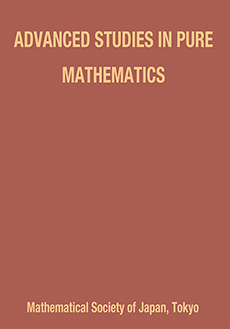Abstract
Let $\mathcal{G}$ be a geometry in which the elements of one type are called points and the elements of some other type are called lines. Suppose that every line is incident to exactly $p + 1$ points where $p$ is a prime number. A (non-abelian) representation of $\mathcal{G}$ is a pair $(R, \psi)$, where $R$ is a group and $\psi$ is a mapping of the set of points of $\mathcal{G}$ into the set of subgroups of order $p$ in $R$ such that $R$ is generated by the image of $\psi$ and whenever $\{x_{\infty}, x_0, \dots, x_{p-1}\}$ is the set of points incident to a line, the subgroups $\psi (x_{\infty}), \psi (x_0), \dots, \psi (x_{p-1})$ are pairwise different and generate in $R$ a subgroup of order $p^2$. In this article we discuss representations of some classical and sporadic geometries and their applications to certain problems in algebraic combinatorics and group theory.
Information
Digital Object Identifier: 10.2969/aspm/03210301


